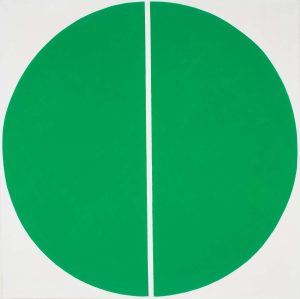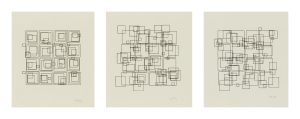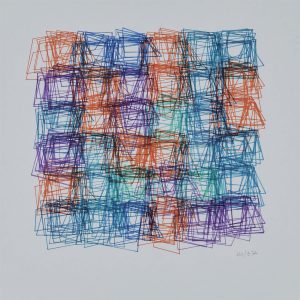
Vera MOLNÁR
1 % Disorder
- Year(s)
- 1976
- Technique
- ink on paper
- Size
- 5 pcs / 29,5x29,5 cm each
Artist's introduction
Living in France since 1947, Vera Molnar is one of the pioneers of Computer art. In 1959, she began to make combinatory images and model mathematical regularities using a method she called “machine imaginaire”. In 1968, she got the opportunity to work with a real computer. Molnar then began to use computer technologies as a generative tool to create paintings and graphic art, which broadened the frontiers of science and art. In her computer graphics, each image primarily refers to the unlimited possibilities of variation inherent to the underlying program. In creating these computer-generated drawings and graphics, the program creates specific geometric shapes and formations that can combine in a precalculated or unexpected way. The serial aspect of this method is also essential, as it allows the artist to transform the shapes systematically, as Molnar did with the line. Molnar is interested in the systematically produced random quality and the study of the infinite transformations of geometric shapes such as the square or the trapezoid. The computer’s algorithmic randomness plays a crucial role in her work. Order and disorder, structure and freedom provide important notions to understand her artistic practice further. Molnar said the following about her work, “I was not interested in anything but the simplest form, the square; what happens with it if there is order and what if there is none”. Zsófia Rátkai
More artworks in the artist's collection »













